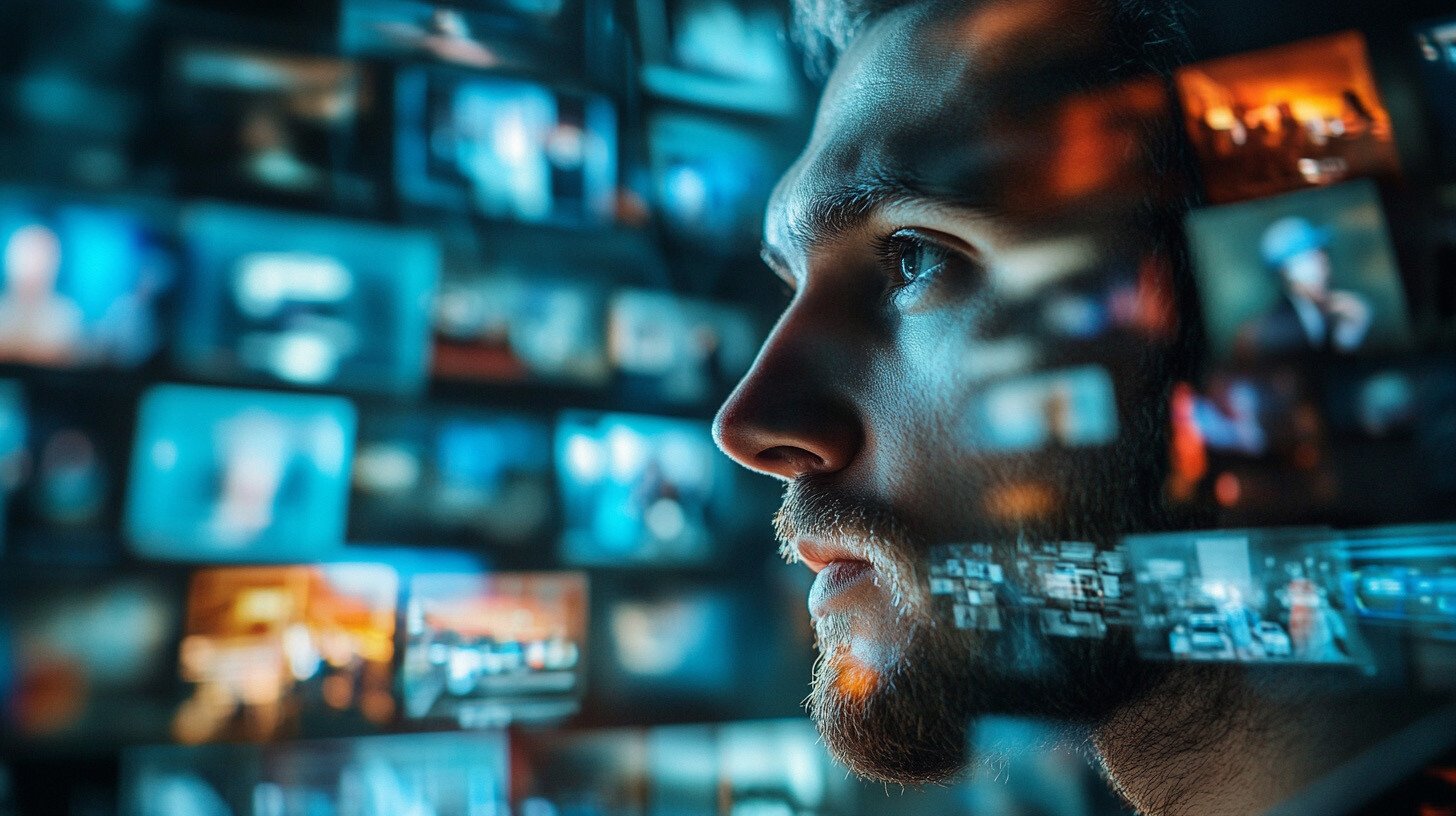Mastering the Art of Live Video: Top Tips for Keeping Learners Engaged
Personal live video is a staple in virtual and hybrid learning environments. When used thoughtfully, it enhances engagement, strengthens human...
5 min read
.jpg) Dr. Charles (Chip) Dye, Ph.D.
:
Jan 9, 2025 10:32:30 AM
Dr. Charles (Chip) Dye, Ph.D.
:
Jan 9, 2025 10:32:30 AM

This article explores the impact of live video in virtual learning, analyzing whether it boosts engagement or increases distraction based on InSync Training’s 2024 research.
Key Points

The COVID-19 pandemic triggered a rapid and often inconsistent shift to virtual live instruction, creating a host of issues for both learners and researchers to explore. Among the most recognizable phenomena is “Zoom Fatigue,” but various studies have also examined the cognitive, social, and instructional impacts of transitioning nearly all learning and development activities to online environments. One key element frequently mentioned, though not directly addressed in many studies, is the use of “personal video” — live video feeds of learners and instructors visible to their peers — as an instructional tool. Research and opinions remain divided on its effectiveness, highlighting both the benefits and drawbacks of being “on camera” throughout virtual sessions.
In 2024, InSync launched a research initiative to evaluate the use of personal video in virtual classrooms. This effort aimed to understand current industry practices and develop evidence-based best practices for leveraging personal video as an instructional asset. Given the extensive exposure most of today’s workforce has had to virtual live instruction, both learners and instructional professionals contributed insights grounded in significant firsthand experience.

The sudden shift from in-person to virtual live instruction during the global pandemic required instructors to adapt quickly, often using whatever tools and platforms were immediately available. Over 90% of instructors reported having little to no formal training on the capabilities of virtual classrooms or time to redesign their learning experiences before making the transition.
In 2020, personal video—live video feeds of learners and instructors—became a quick solution to ensure attendance and participation. For instructors with limited virtual teaching experience, it also served as a substitute for the non-verbal cues they had relied on in face-to-face settings to guide delivery and gauge engagement.
This reliance on personal video reduced the perceived urgency to redesign instructional strategies to take advantage of interactive tools available in virtual classrooms, such as polls, breakout rooms, and collaborative activities. Instead, video was used as a familiar fallback to mimic in-person experiences.
Today, 96% of respondents reported that continuous personal video is still required during virtual live instruction. However, this practice appears to be shaped more by the preferences of stakeholders and instructors than by the needs or preferences of learners.
Engagement in virtual classrooms differs significantly from traditional, in-person instruction. Facilitators must rely on non-traditional indicators of engagement and adopt interactive designs that leverage virtual tools. Early in the shift to virtual learning, personal video became a quick solution to replicate in-person dynamics, providing visual cues to gauge attention and interaction. However, this approach often lacked strategic intent, focusing on familiarity rather than maximizing virtual classroom capabilities.
Virtual classrooms offer capabilities that extend beyond traditional learning environments, but leveraging these tools effectively requires intentional design for the capabilities in that environment. Learner engagement—shaped by factors such as location, experience, and interest—provides a useful framework for measuring success of the instruction. To better understand the dynamics of engagement within the instructional experience, InSync’s InQuire Engagement Framework® evaluates three critical dimensions of learner engagement—Emotional, Environmental, and Intellectual—within any learning environment. In the context of this research, use of the framework provided insights into when and how personal video can enhance learning outcomes.
Emotional engagement focuses on creating personal connections between learners, facilitators, and content. Personal video can reduce feelings of isolation and help learners feel emotionally present in virtual environments.
Best Practice Tip: Use video selectively to build relationships and create moments of visibility instead of requiring constant camera use.
Environmental engagement reflects how effectively learners interact with tools and features in the virtual classroom, such as polls, whiteboards, breakout rooms, and chat features. Unlike traditional classrooms, virtual environments are rich with opportunities for interaction, but over-reliance on video can discourage exploration of these tools.
Best Practice Tip: Incorporate multimodal activities (polls, chats, and collaborative tools) to encourage learners to engage with the environment, using video only when visual presence adds value to the activity.
Intellectual engagement focuses on how learners adapt information presented into their personal practice and application. Effective virtual instruction should stimulate curiosity, reflection, and problem-solving, which are often supported by structured interactions rather than constant visual monitoring.
Best Practice Tip: Use video strategically to signal key moments for focused attention (e.g., a guest speaker or a demonstration) while balancing it with off-camera tasks that encourage deep thinking and application.
The InQuire Engagement Framework highlights that effective engagement in virtual classrooms requires intentional design and a strategic approach to using tools like personal video. Research demonstrates that learner engagement, whether emotional, environmental, or intellectual, is strongly correlated with better learning outcomes and improved performance post-delivery.
Rather than asking, “Is personal video appropriate in virtual classrooms?”, facilitators should focus on the more impactful question: “When and how should personal video be used to maximize learner engagement?” Thoughtful integration of video—paired with other interactive tools—can transform virtual learning experiences and deliver lasting results.
The study revealed that personal video in virtual classrooms has a dual impact on learners. On one hand, most learners reported that video helps them stay focused and feel more connected during sessions. On the other hand, many also found video to be a distraction, negatively affecting their ability to focus on instructional content and engage meaningfully with peers.
A notable minority of learners expressed strong disengagement when required to keep their cameras on continuously. They reported being distracted by their own appearance, other participants’ video feeds, and irrelevant visual elements in the virtual environment, which diverted attention away from learning.
In contrast, the purposeful use of personal video—such as during small group breakout sessions—was widely viewed as engaging, even by those who opposed continuous video throughout the session. This highlights the importance of strategic integration rather than relying on video as a default setting.
Research clearly shows that personal video can be a powerful tool for engaging learners in virtual classrooms—when used strategically. The key lies in knowing when and how to incorporate video to enhance interaction between learners and facilitators without causing fatigue or distraction.
Our study identified six best practices for using personal video to maximize engagement and improve outcomes—along with specific pitfalls to avoid. These practices cover everything from session design to implementation strategies, ensuring video serves as a supplement to other instructional techniques rather than a replacement.
These eight best practices, and other really interesting findings, are available in the full research report and in the webinar.
Interested in hearing what our research revealed?
👉 Register for our upcoming webinar : The How and When of Using Personal Video in Virtual Live Instruction
📅 February 13, 2025, at 2 PM ET
✅ Exclusive Takeaways for Attendees: Free research report + actionable frameworks.
Go Further with InSync’s Certification Programs
Ready to master the virtual classroom for they hybrid learning environment?
🔍 Explore InSync’s Virtual Learning Expert™ Program and lead impactful online sessions with confidence.

Personal live video is a staple in virtual and hybrid learning environments. When used thoughtfully, it enhances engagement, strengthens human...

InSync Training Unveils Critical Research Report on Video Use in Virtual ClassroomsPortsmouth, NH, February 12, 2025 – InSync Training, the global...

We’re excited to unveil our latest research report “Video in Virtual Live – Effective Use of Personal Cameras in the Virtual Live Learning Environment